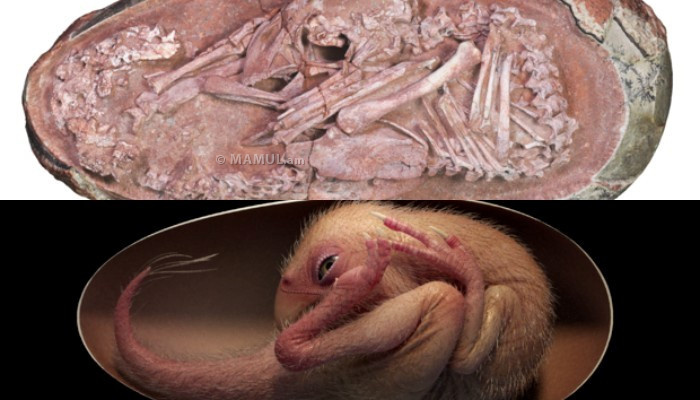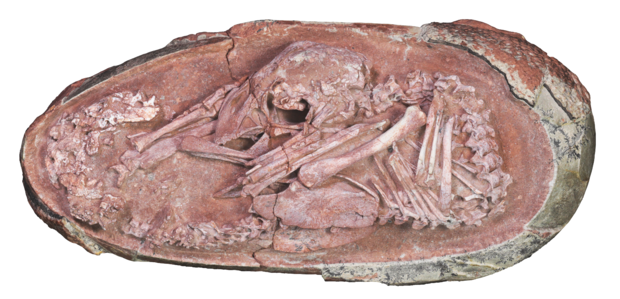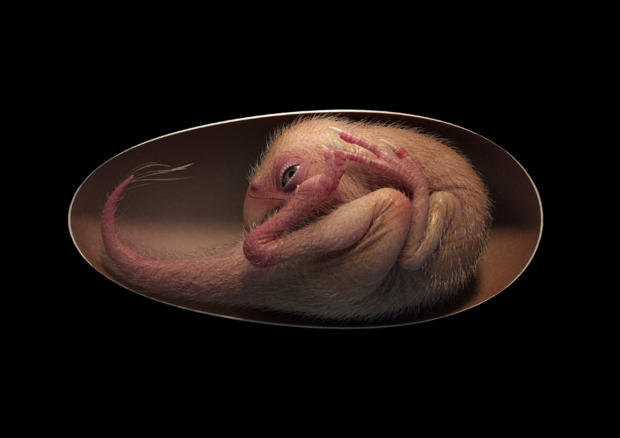A dinosaur embryo has been found inside a fossilized egg. Here's what that means.
 A well-preserved dinosaur embryo has been found inside a fossilized egg. The fossilized dinosaur embryo came from Ganzhou, Jiangxi Province in southern China and was acquired by researchers in 2000. "Museum staff identified them as dinosaur eggs and saw some bones on the broken cross section of one of the eggs," Lida Xing of China University of Geosciences, Beijing, said in a news release. A embryo was found hidden within, which they named "Baby Yingliang." The embryo is that of the bird-like oviraptorosaurs, part of the theropod group. Theropod means "beast foot," but theropod feet usually resembled those of birds. Birds are descended from one lineage of small theropods. In studying the embryo, researchers found the dinosaur took on a distinctive tucking posture before hatching, which had been considered unique to birds. The study is published in the iScience journal. Researchers say this behavior may have evolved through non-avian theropods. "Most known non-avian dinosaur embryos are incomplete with skeletons disarticulated," said Waisum Maof the University of Birmingham, U.K. "We were surprised to see this embryo beautifully preserved inside a dinosaur egg, lying in a bird-like posture. This posture had not been recognized in non-avian dinosaurs before."While fossilized dinosaur eggs have been found during the last 100 years, discovering a well-preserved embryo is very rare, the researchers said in the release. The embryo's posture was not previously seen in non-avian dinosaur, which is "especially notable because it's reminiscent of a late-stage modern bird embryo." The researchers will continue to study the rare specimen in even more depth. They will attempt to image its internal anatomy. Some of its body parts are still covered in rocks. Their findings can also be used in more studies of fossil embryos.   |

Japan Unveils Human Washing Machine, Now You Can Get Washed Like Laundry (video)
114901.12.2025, 20:45
Chinese humanoid robot sets Guinness World Record with 106-km inter-city walk (video)
81524.11.2025, 16:30
Musk։ Optimus will be able to eliminate poverty and provide everyone with a universal high income (video)
81523.11.2025, 12:45
AGMI researchers expose the hidden role of female perpetrators in the Armenian Genocide (photo)
80013.11.2025, 21:15
LVM3-M5 mission successfully launches CMS-03 satellite (video)
111502.11.2025, 21:17
Google разработала квантовый алгоритм, работающий в 13 тыс. раз быстрее алгоритма суперкомпьютеров
147622.10.2025, 23:44
